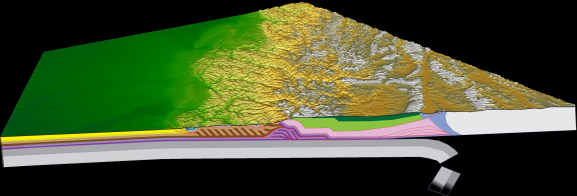 HKU Department of Earth Science
HKU Department of Earth Science
Seminar

Thermo-kinematic modelling – methodology and applications
-
Date
November 14,2023
-
Time
3:30PM
-
Venue
JL104
-
Speaker
Dr. Diego Costantino Department of Earth Sciences, HKU
Thermochronology, that is the study of the time-temperature evolution of rocks, involves analysing certain minerals in rocks to provide insights about the geological processes that have affected the rocks through time. In structural geology, one of the most relevant pieces of information derived from thermochronology is rock exhumation. In particular, the exhumation rate quantifies the speed at which rocks have been brought to a shallower depth within the Earth. This is crucial information to understand the dynamics of mountain building, erosion, and other geological processes. However, questions, including the following, are why we keep exploring further uses of the thermal fields in geology. 1) Can we use discrete (1D) thermal data to provide continuous quantitative constraints for geological models and help in the understanding of kinematics, mechanics, and the evolution of fold-and-thrust bets? 2) Can we go even further in the investigation, refining, and testing hypotheses regarding the deformation history of the middle and lower lithosphere and geodynamic processes operating in areas where two lithospheric plates collide?
The progress made in the fields of thermochronology, numerical modeling, and computacional processes presents an opportunity to stablish a correlation between the age of thermochronometric samples and both exhumational and deformational processes. This can be achieved by employing “thermos-kinematic models” to calculate predicted thermochronometric ages, which can be compared against actual thermochronometric samples to validate 2D deformational processes.
I present two case studies:
1) The first case focuses on the Easter Cordillera of Colombia, where the methodology was employed to challenge the conventional assumptions regarding deformation and folding mechanisms in this orogeny.
2) The second case study involves ongoing research in the Easter Himalayas (Bhutan), where we analyse the impact of the dynamic topography on the thermal field. Our objective is to shed light on the significance of incorporating these first-order deformational phenomena into studies of analog convergent zones.
Additional information: Dr. Diego Costantino, dcostant@hku.hk
